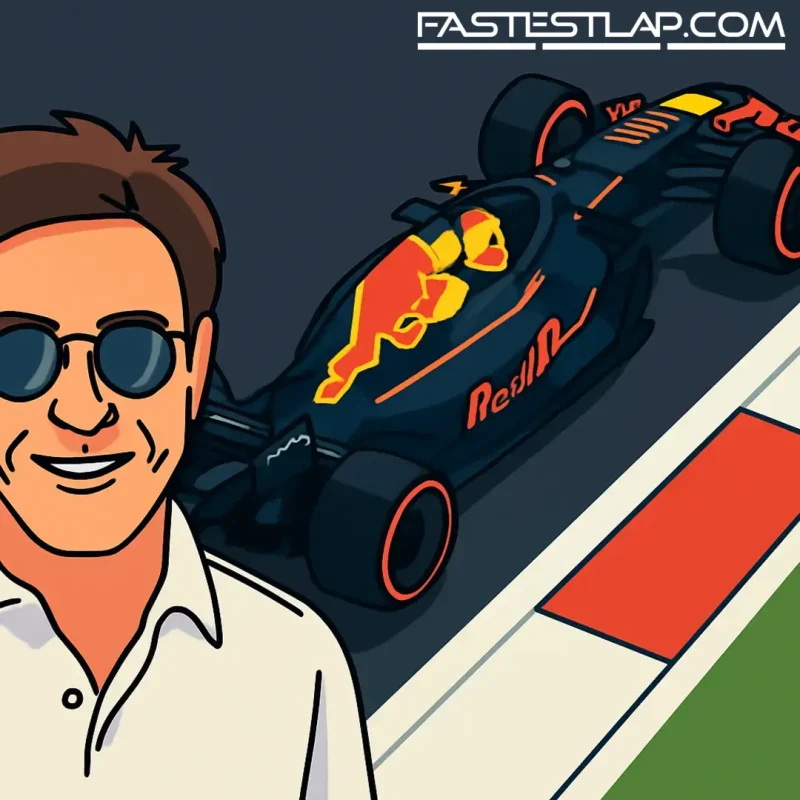Toto Wolff on Red Bull’s engine gamble: “Like climbing Everest”
Toto Wolff doesn’t hand out compliments easily, especially across the aisle. But the Mercedes boss knows better than to underestimate Red Bull. From being laughed off as an energy drink outfit to hoovering up world titles, they’ve made a business of proving people wrong. The next mountain, though, is as steep as they come: building their own Formula 1 power unit for 2026.
“This project is like climbing Mount Everest,” Wolff told De Telegraaf, speaking about Red Bull Powertrains’ push into the engine game with Ford. “They are taking on manufacturers with decades of experience… given the complexity of the engines, I do think it will be a huge challenge for them.”
It’s not an idle warning. The last time F1 ripped up its engine regulations, Mercedes wrote the book. From 2014 to 2021, the Silver Arrows owned the hybrid era, stacking eight straight Constructors’ crowns and redefining the term “works advantage.” Red Bull, for all its brilliance, needed Honda’s late-2010s revival to disrupt that cycle, an alliance that returned six world titles and gave Max Verstappen the platform for his title run between 2021 and 2024.
But that chapter is closing. With Honda switching its supply to Aston Martin for 2026, Red Bull chose the harder road: build it yourself. Red Bull Powertrains, in partnership with Ford, will roll out a brand-new PU for the next ruleset, where electrical power and energy deployment sit at the heart of performance. More MGU power, tighter packaging, harsher energy limits — ‘software race’ might be the phrase you’ll get sick of hearing, but it won’t be wrong.
Wolff’s respect is laced with realism. Red Bull won’t just be up against Mercedes and Ferrari in 2026; Audi arrives with a full factory program, Honda returns with Aston Martin, and Renault remains in the fight. General Motors is expected later down the line. There won’t be any soft landings.
Inside Red Bull, the tone is bullish, but not delusional. Christian Horner has long framed the project as a generational play rather than a one-lap miracle. “We understand the pressure… The challenge of that is enormous,” he said earlier. “We’ve got a hugely capable group of people. We’ve invested significantly… Having it under one roof — chassis engineers sitting next to engine engineers — that shouldn’t be underestimated. Maybe it won’t be in ’26, but ’27, ’28, and beyond, long term for Red Bull, 100 percent it is the right thing.”
That integration is the ace card. One campus, one language, one aerodynamic concept built around the power unit, not the other way around. It’s how Mercedes set the tone in 2014, and it’s how the very best teams squeeze lap time from places you can’t see on a CAD model. If Red Bull hit the reliability targets early and the software tools are mature, the back half of the decade could be exactly what Horner’s hinting at.
The risk is obvious, and Wolff’s “Everest” line captures it neatly. Power units are brutally complex, and even the giants get it wrong. It’s not just raw power; it’s controlling deployment across an entire lap, harvesting efficiently, thermal management, and then packaging all of it in a car that still wants skinny sidepods and a hungry floor. Red Bull can throw resource at the problem — and they have — but the first year of a new engine era has historically rewarded those who’ve been here before.
Still, count them out at your peril. The same outfit many dismissed has 14 world championships in the cabinet and a habit of landing on its feet. The grid that forms up for 2026 will be thick with storylines — Mercedes defending its engine reputation, Ferrari chasing fluency, Audi making a statement, Aston Martin betting big with Honda — and right in the middle of it, Red Bull’s homegrown hybrid trying to crash the party.
Wolff’s warning stands. So does Red Bull’s track record. Somewhere between those two truths sits the answer to F1’s next era.




